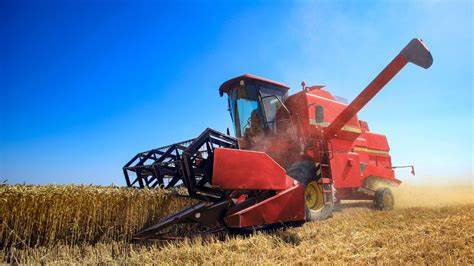
Agriculture is the backbone of Sri Lanka’s economy, supporting millions of livelihoods across tea estates, rubber plantations, and small-scale farms. However, traditional farming methods often struggle with inefficiencies, labor shortages, and unpredictable weather. The solution? Optimizing farm operations.
In this article, we’ll explore how workflow management, modern technology, and sustainable practices can transform your farming practices, improve yields, and ensure long-term success. Whether you manage a tea estate, rubber plantation, or a small farm, these strategies will help you grow smarter and more efficiently.
Why Optimizing Farm Operations Matters
Farming in Sri Lanka faces several challenges:
- Inefficient Workflows: Wasted time and resources due to poor planning.
- Labor Shortages: Rising costs and a shrinking workforce.
- Resource Scarcity: Limited access to water and fertile soil.
- Climate Change: Unpredictable weather affecting crop yields.
Optimizing farm operations addresses these issues by:
- Maximizing Efficiency: Using resources like water, fertilizer, and labor more effectively.
- Increasing Yields: Advanced tools and techniques can double or even triple productivity.
- Ensuring Sustainability: Protecting the environment while improving farm output.
For Sri Lanka, where tea, rubber, and spices are key exports, optimizing operations is not just an option—it’s a necessity.
Key Strategies to Optimize Farm Operations
Here are five proven strategies to boost productivity and efficiency on your farm:
1. Streamline Workflow Management
Efficient workflow management ensures tasks are completed on time and resources are used effectively.
How to Implement:
- Use farm management software to plan and track tasks.
- Assign roles and responsibilities to workers to avoid duplication of effort.
- Regularly review and adjust workflows to address bottlenecks.
Example: A tea estate in Nuwara Eliya reduced labor costs by 20% using task scheduling apps.
2. Adopt Precision Farming Techniques
Precision farming uses technology like GPS, drones, and IoT sensors to monitor crops and soil conditions.
How to Implement:
- Use drones to analyze crop health and identify problem areas.
- Install IoT sensors to monitor soil moisture and weather conditions in real-time.
- Apply fertilizers and pesticides precisely where needed to reduce waste.
Example: A rubber plantation in Ratnapura increased yield by 15% with precision irrigation.
3. Implement Sustainable Practices
Sustainable farming practices protect the environment while improving productivity.
How to Implement:
- Switch to drip irrigation to save water and reduce runoff.
- Practice crop rotation to maintain soil health.
- Use organic fertilizers and pest control methods.
Example: A vegetable farm in Kandy saved 25% water with drip irrigation.
4. Leverage Data-Driven Insights
Data helps farmers make informed decisions about planting, watering, and harvesting.
How to Implement:
- Collect data on soil health, weather patterns, and crop performance.
- Use analytics tools to identify trends and optimize operations.
- Adjust farming practices based on data insights.
Example: A flower farm in Colombo improved bloom quality using climate-controlled greenhouses.
5. Invest in Training and Technology
Training workers on modern farming techniques and tools can significantly improve productivity.
How to Implement:
- Provide training on using farm management software and precision tools.
- Educate workers on sustainable practices like organic farming.
- Encourage the use of mobile apps for crop management and market access.
Example: A small-scale farmer in Kurunegala doubled income after learning about mobile apps for market access.
Real-Life Success Stories from Sri Lanka
Tea Estates
- IoT Sensors: Monitor soil moisture and weather conditions in real-time.
- Drones: Analyze crop health and identify problem areas.
Result: A tea estate in Hatton increased yield by 20% and reduced water usage by 15%.
Rubber Plantations
- Automated Tapping Machines: Increase latex yield and reduce labor costs.
- Smart Irrigation: Optimize water use for healthier rubber trees.
Result: A rubber plantation in Monaragala saved 30% water and increased latex production by 10%.
Small-Scale Farms
- Mobile Apps: Provide market access and crop management tips.
- Vertical Farming: Maximize space in urban areas like Colombo.
Result: A small-scale farmer in Gampaha doubled income using a mobile app to connect with buyers.
How to Get Started with Optimizing Your Farm
Ready to embrace innovation? Follow these steps:
- Assess Your Needs: Identify your biggest challenges (e.g., water scarcity, low yields).
- Start Small: Implement one strategy at a time (e.g., drip irrigation or task scheduling).
- Leverage Local Resources: Partner with agricultural experts or organizations in Sri Lanka.
- Monitor and Adapt: Use data to refine your approach and maximize results.
The Future of Farm Optimization in Sri Lanka
The future of agriculture in Sri Lanka is bright, with exciting trends on the horizon:
- AI in Agriculture: Smart tools that predict weather patterns and optimize planting schedules.
- Blockchain for Supply Chains: Ensure transparency and fair pricing for farmers.
- Government Support: Initiatives to promote modern farming techniques among small-scale farmers.
By embracing innovation, Sri Lanka’s farmers can not only overcome current challenges but also thrive in the years to come.
Conclusion
Optimizing farm operations is no longer a luxury—it’s a necessity for tea estates, rubber plantations, and small-scale farmers in Sri Lanka. From workflow management to precision farming and sustainable practices, these strategies offer practical solutions to boost productivity, save resources, and ensure sustainability.
The success stories shared here prove that optimized farming is not just possible but highly rewarding. Whether you manage a tea estate, rubber plantation, or a small farm, now is the time to embrace innovation and transform your farming practices.
For more tips and resources on optimizing farm operations, visit Lakparts.com or explore Vagaa.lk for innovative agricultural solutions tailored to Sri Lanka’s unique needs.




